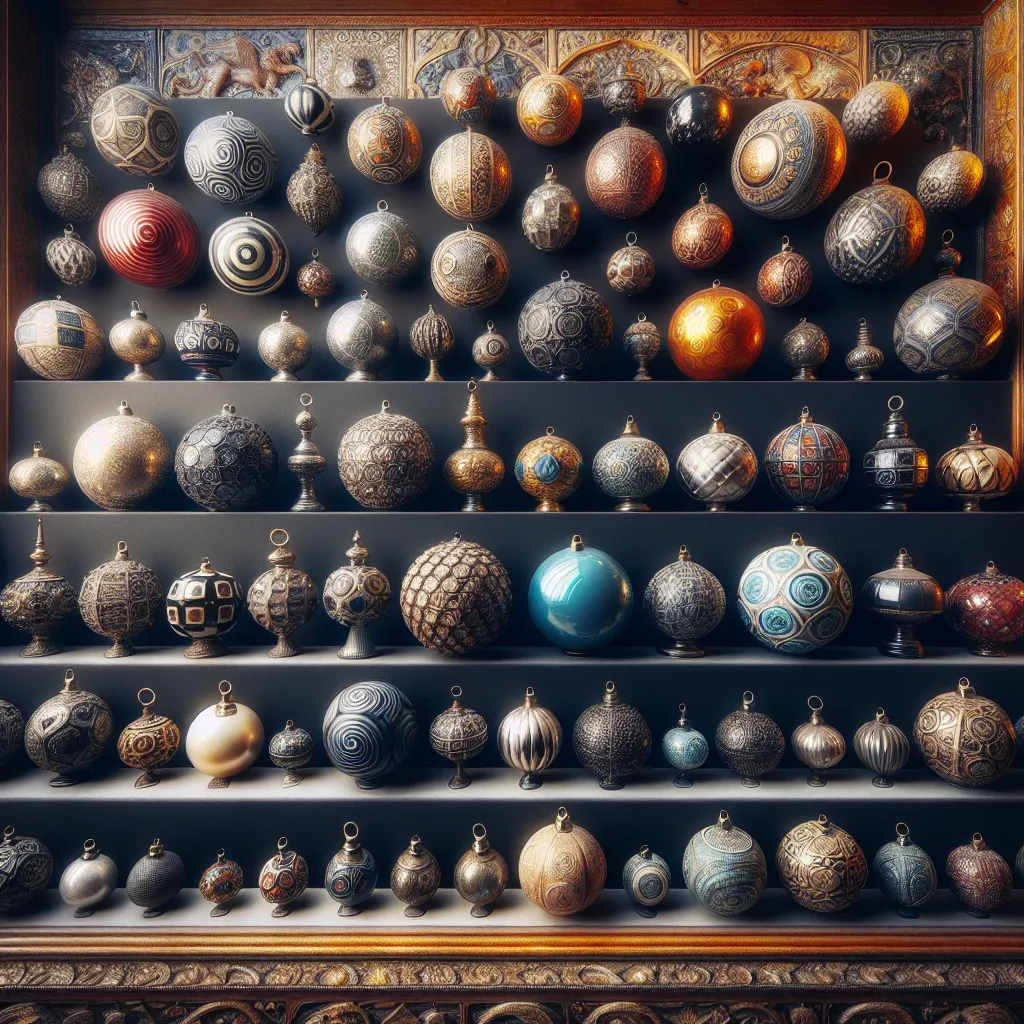Ancient Baubles: Origins and Significance
Throughout history, baubles have been an essential part of human adornment and self-expression. The origins of baubles can be traced back to ancient civilizations such as the Egyptians, Greeks, and Romans. In ancient Egypt, baubles were crafted from a variety of materials including gold, semi-precious stones, and glass beads. These baubles were worn as decorative ornaments and were often believed to possess magical or protective qualities.
In ancient Greece, baubles held significant cultural and religious importance. Jewelry adorned with baubles was used to signify social status, wealth, and spiritual beliefs. The intricate designs and use of colorful gemstones in these baubles reflected the artistic and mythological themes of the time.
Similarly, in ancient Rome, baubles were valued not only for their aesthetic appeal but also for their symbolic meanings. They were often worn as amulets to bring good luck and ward off evil spirits. Baubles also played a crucial role in religious ceremonies and were considered offerings to the gods.
The significance of ancient baubles extended beyond mere decoration; they symbolized cultural identity, spiritual beliefs, and social standing. The evolution of baubles from ancient times to modern designs reflects the enduring fascination with these timeless adornments.
The Renaissance of Baubles: Artistic Transformations
During the Renaissance period, baubles experienced a significant artistic transformation that reflected the cultural and artistic developments of the era. The wealthy elite of the Renaissance, including the royal courts and nobility, adorned themselves with exquisitely crafted baubles, showcasing their status and taste for luxury. This era saw a shift towards more intricate and detailed designs, often incorporating precious gemstones, intricate metalwork, and elaborate engravings.
Artisans and craftsmen honed their skills to meet the demand for unique and ornate baubles, leading to the emergence of renowned jewelry workshops across Europe. The Renaissance also marked the revival of ancient classical motifs and forms, inspiring a fusion of Greco-Roman designs with contemporary styles. Baubles became symbolic of wealth, power, and artistic expression, with each piece telling a story of the wearer’s social standing and personal identity.
The patronage of influential artistic figures, such as the Medici family in Florence, spurred innovation and creativity in bauble design. Experimentation with unconventional materials and techniques led to the creation of avant-garde pieces that challenged traditional notions of adornment. The Renaissance of baubles not only elevated their status as coveted accessories but also elevated the craft of jewelry-making to the realm of fine art.
As the Renaissance unfolded, baubles became an integral part of elaborate court rituals, celebrations, and symbolic exchanges, further cementing their significance in the cultural zeitgeist. The era’s fascination with humanism and the revival of classical knowledge infused bauble designs with allegorical and mythological themes, adding layers of meaning to these exquisite adornments. This period of artistic flourishing laid the foundation for the future evolution of baubles, influencing generations of designers and craftsmen to come.
Modern Baubles: Innovations and Trends
Modern baubles have undergone a remarkable transformation in recent years, reflecting the ever-changing tastes and trends in interior design and holiday decor. One of the key innovations in modern baubles is the use of alternative materials such as glass, metal, and even sustainable materials like recycled paper and wood. This shift towards eco-friendly materials has gained popularity as consumers become more environmentally conscious.
Another notable trend in modern baubles is the diversification of shapes and designs. While traditional baubles were typically round and shiny, modern iterations come in a variety of geometric shapes, textures, and finishes. From sleek minimalist designs to intricately detailed pieces, the options for modern baubles are seemingly endless, catering to a wide range of design preferences.
Technological advancements have also played a significant role in the evolution of baubles. LED lighting has revolutionized the way baubles are illuminated, allowing for more energy-efficient and long-lasting options. This has opened up new possibilities for incorporating lighting effects and dynamic color changes into bauble designs, adding a touch of modern flair to traditional holiday decorations.
Furthermore, the concept of personalized and customizable baubles has gained traction in recent years. Many consumers seek unique, one-of-a-kind baubles that speak to their individual style and interests. This has led to the rise of custom bauble design services, offering the opportunity to create personalized ornaments that reflect personal stories, hobbies, and memories.
In conclusion, modern baubles have evolved to encompass a diverse range of materials, shapes, designs, and technological features. As we look to the future, it’s evident that the innovation and creativity in bauble design will continue to thrive, catering to the ever-changing preferences of consumers and the demands of contemporary interior and holiday decor trends.
